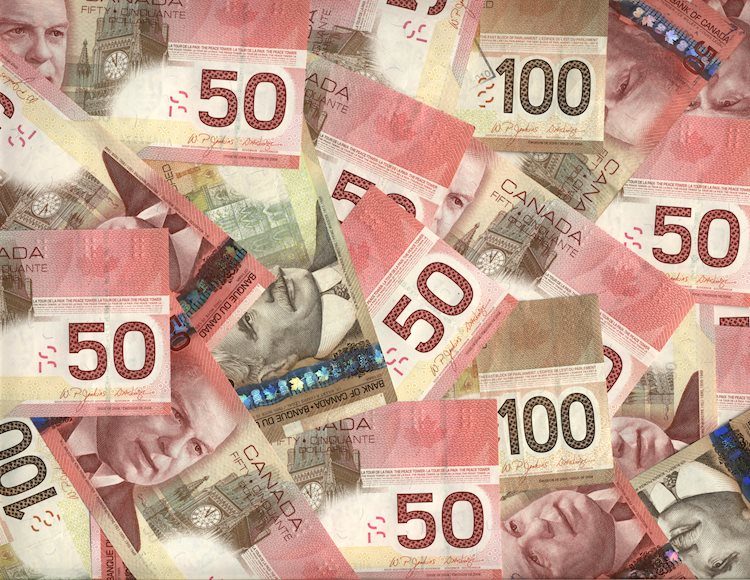- USD/CAD trades with mild negative bias near 1.3885 in Monday’s early European session.
- Lower crude oil prices might weigh on the Loonie.
- The BoC Governor Macklem’s speech will take center stage on Monday.
The USD/CAD pair trades with mild losses around 1.3885 on Monday during the early European trading hours. Nonetheless, the downside seems limited as the fall in crude oil prices could weigh on the commodity-linked Canadian Dollar (CAD) and create a tailwind for the pair. Traders will focus on Bank of Canada (BoC) Governor Macklem’s speech on Monday for fresh impetus.
The US Dollar (USD) gains ground near a three-month top amid signs of strength in the US economy and bets that the US Federal Reserve (Fed) will proceed with modest rate cuts over the year. Financial markets have priced in a 97.7% chance that the Fed will cut rates by 25 basis points (bps) in November, according to the CME FedWatch tool. Additionally, bets on Donald Trump winning the US presidential election lift US bond yields and support the Greenback.
Investors will keep an eye on the advanced US Gross Domestic Product (GDP) Annualized for the third quarter (Q3), which is due on Wednesday. The Core Personal Consumption Expenditures (PCE) Price Index for September will be published on Thursday. The highly anticipated US Nonfarm Payrolls (NFP) will be the highlight on Friday.
Crude oil prices fall on Monday amid easing geopolitical tensions in the Middle East, which undermines the CAD as Canada is the major crude oil exporter to the United States. Furthermore, the downbeat Canadian Retail Sales for August exert some selling pressure on the Loonie. Data released by Statistics Canada on Friday showed that Retail Sales increased by 0.4% MoM in August from a rise of 0.9% in July, below the market consensus of 0.5%.
Canadian Dollar FAQs
The key factors driving the Canadian Dollar (CAD) are the level of interest rates set by the Bank of Canada (BoC), the price of Oil, Canada’s largest export, the health of its economy, inflation and the Trade Balance, which is the difference between the value of Canada’s exports versus its imports. Other factors include market sentiment – whether investors are taking on more risky assets (risk-on) or seeking safe-havens (risk-off) – with risk-on being CAD-positive. As its largest trading partner, the health of the US economy is also a key factor influencing the Canadian Dollar.
The Bank of Canada (BoC) has a significant influence on the Canadian Dollar by setting the level of interest rates that banks can lend to one another. This influences the level of interest rates for everyone. The main goal of the BoC is to maintain inflation at 1-3% by adjusting interest rates up or down. Relatively higher interest rates tend to be positive for the CAD. The Bank of Canada can also use quantitative easing and tightening to influence credit conditions, with the former CAD-negative and the latter CAD-positive.
The price of Oil is a key factor impacting the value of the Canadian Dollar. Petroleum is Canada’s biggest export, so Oil price tends to have an immediate impact on the CAD value. Generally, if Oil price rises CAD also goes up, as aggregate demand for the currency increases. The opposite is the case if the price of Oil falls. Higher Oil prices also tend to result in a greater likelihood of a positive Trade Balance, which is also supportive of the CAD.
While inflation had always traditionally been thought of as a negative factor for a currency since it lowers the value of money, the opposite has actually been the case in modern times with the relaxation of cross-border capital controls. Higher inflation tends to lead central banks to put up interest rates which attracts more capital inflows from global investors seeking a lucrative place to keep their money. This increases demand for the local currency, which in Canada’s case is the Canadian Dollar.
Macroeconomic data releases gauge the health of the economy and can have an impact on the Canadian Dollar. Indicators such as GDP, Manufacturing and Services PMIs, employment, and consumer sentiment surveys can all influence the direction of the CAD. A strong economy is good for the Canadian Dollar. Not only does it attract more foreign investment but it may encourage the Bank of Canada to put up interest rates, leading to a stronger currency. If economic data is weak, however, the CAD is likely to fall.
Read the full article here

